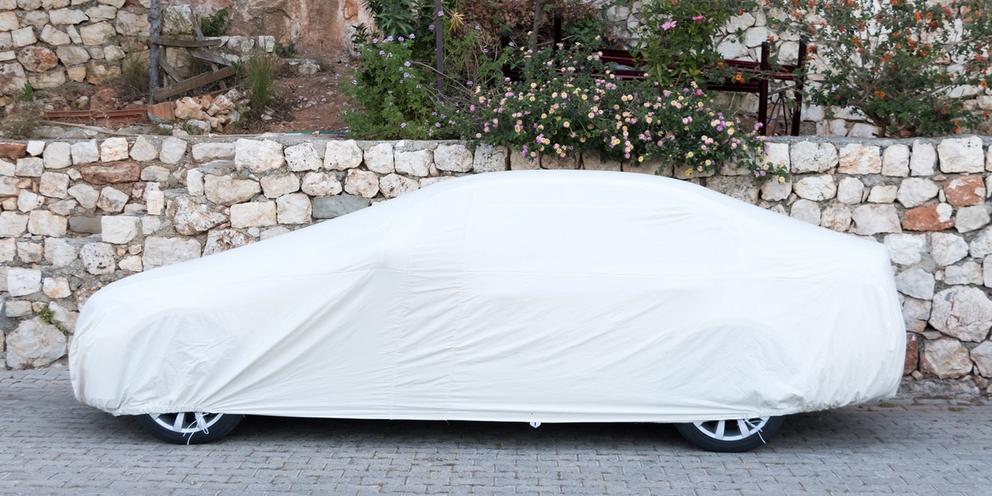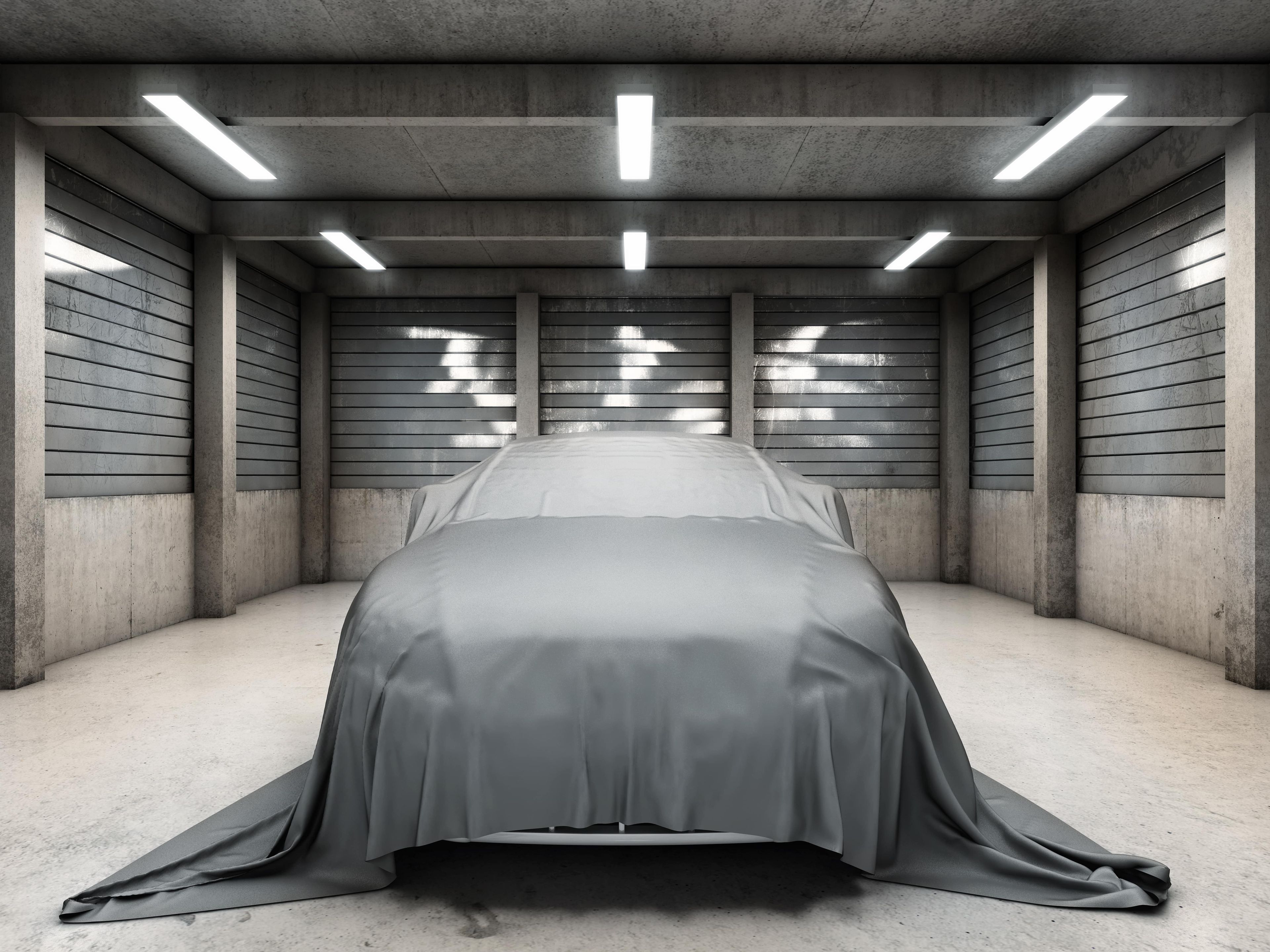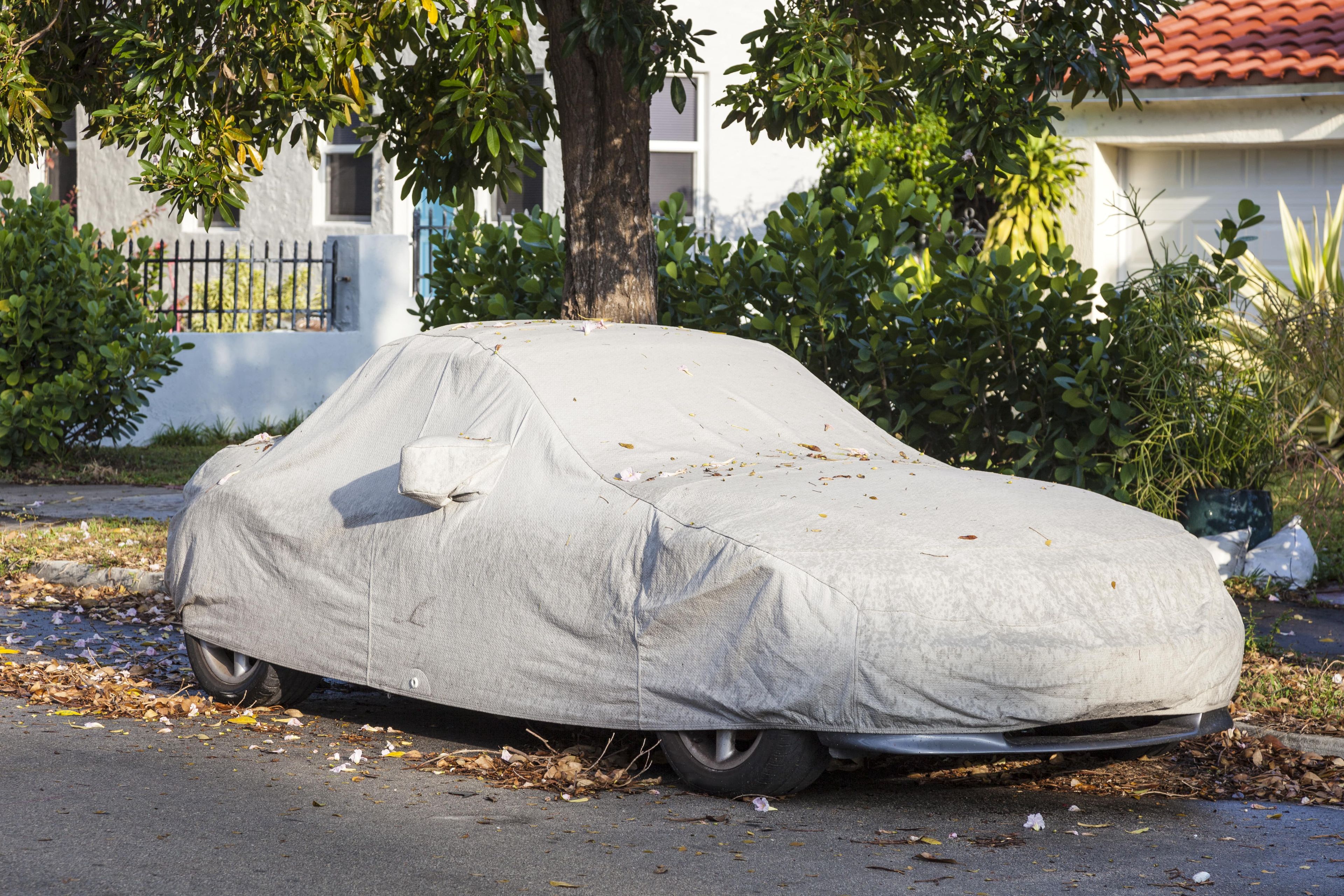
5 Reasons Why You Should Own Multiple Car Covers
Your vehicle is one of your most significant investments, so you must handle it with the best possible care. A car cover can protect your vehicle, ensuring its longevity. But not all car covers are created equal. Depending on the region in which you’re parking your vehicle and the weather in that area, you may need to be prepared with various covers to shield your car from all kinds of elements. Whether it’s rain, snow, intense sunshine, or dust, there are benefits to owning multiple car covers.
Source: Anton Watman/Shutterstock.com
1. Prepare for All Weather Conditions
Depending on where you live or where you frequently drive your vehicle, having multiple covers to protect your car in various types of weather is key to keeping it looking its best. While some car covers are specifically designed to shield vehicles from UV rays, others are better for providing a water-resistant layer that keeps your car dry while allowing it to breathe, preventing mold and mildew. While you can buy covers designed for year-round protection, purchasing multiple car covers that each serve a unique purpose can help ensure your car is protected no matter what the weather forecast looks like.

Source: FreshPaint/Shutterstock.com
2. Store Your Car Anywhere
Whether you have a garage at home, use a parking garage, or leave your car outdoors, it’s essential to be flexible. If you live in a condominium or urban center, you may have to park your car in unexpected places, and owning two separate car covers, one for indoors and for outdoors, is game-changing.
You can purchase indoor car covers that are made of thin, satin material, primarily useful for keeping dust and debris off your car while it’s in storage. The Indoor Black Satin Shield is soft, stretchy, and breathable to protect your car while it’s stored in a garage. When shopping for an outdoor car cover, you should look for a heavy-duty shield that protects your vehicle from harsh elements like rain, snow, and hail.
Why can’t you just use your outdoor car cover indoors? Indoor car covers are typically much more lightweight and breathable than their outdoor counterparts. These lighter, softer covers can be better for protecting a fresh wax on your car’s exterior, plus they don’t trap condensation and heat between the cover and car as easily. If your car is stored indoors, you might be doing a disservice by putting an outdoor cover over it. Investing in one of each gives you the flexibility to park your car indoors or outdoors.
3. Change with the Seasons
If you live in a region that experiences all four seasons annually, ensuring you have a car cover for each of these unique climates can be hugely beneficial to your vehicle. This is especially important to consider if you’re storing the vehicle outdoors year-round. In the spring and summer, you’ll want a lightweight outdoor cover that shields your car from rain and moisture while also offering UV protection on sunny, hot summer days. In the winter, you’ll want a cover thick enough to protect your car from snow and also to prevent frost and ice from forming on the car’s surface or freezing your car’s interior components.
For those who live in a region that receives inclement weather like hail, it’s worth purchasing a car cover specifically to protect against dents and falling ice. A hail protector cover for your cover is inflatable and can help prevent damage to your windshield and bodywork in a hailstorm by providing a cushioned barrier. If you want to avoid having four car covers you’ll need to store, consider investing in a custom car cover or two, so you can keep your vehicle outdoors while ensuring it’s adequately protected. One fleece-lined car cover for the winter, specifically for snow and ice protection, is ideal. Then purchase a second one for spring, summer, and fall to protect from rain, UV rays, and debris like bird droppings or tree sap.
4. You Shouldn’t Always Go Waterproof
While having a waterproof cover sometimes is essential to prevent moisture from seeping into your vehicle, it can cause damage to your car over the long term. When moisture or condensation sits on the car’s surface for an extended period, mold develops and can eventually result in rust, doing more damage to your car than if you left it uncovered. That’s why you should consider investing in a waterproof cover in addition to a more breathable outdoor car cover. Then you can ensure your car is protected in heavy rain, but, on days when there are no showers in the forecast, you can shield your vehicle from UV rays by using a lighter, more breathable alternative.
Covers like the Platinum Shield are specifically designed for protecting your vehicle from heavy amounts of moisture like snow and rain. Fleece-lined to protect your car’s exterior, this cover has ultrasonically welded seams so no water can pass through to your vehicle.
Protect Your Vehicle’s Exterior with a Car Cover

Source: Philip Lange/Shutterstock.com
5. Standard vs. Custom
It’s worth investing in a custom car cover for your vehicle while still keeping one or two standard covers on hand. While a custom cover is ideal for outdoor storage on your property, you may feel more comfortable using a standard cover that is not perfectly contoured to your car if you take your vehicle on a road trip and will be parking in areas you’re unfamiliar with.
The Basic Shield Car Cover is an ideal choice for these scenarios. It’s subtle, generic, yet effective at protecting your vehicle against UV rays, dust, dirt, and pollen. The basic cover is also extremely lightweight, so you can pack it away inside the car easily. When you’re parking in a strange place, a standard cover can help prevent theft by masking the type of vehicle beneath it.
Protect Your Investment
Ensuring you have the best possible protection for your car provides peace of mind, especially when it’s sitting in storage for a month or two. Consider investing in multiple car covers so you can dress your vehicle for the season and swap out the covers depending on whether you’re storing the car inside or outside.
Updated